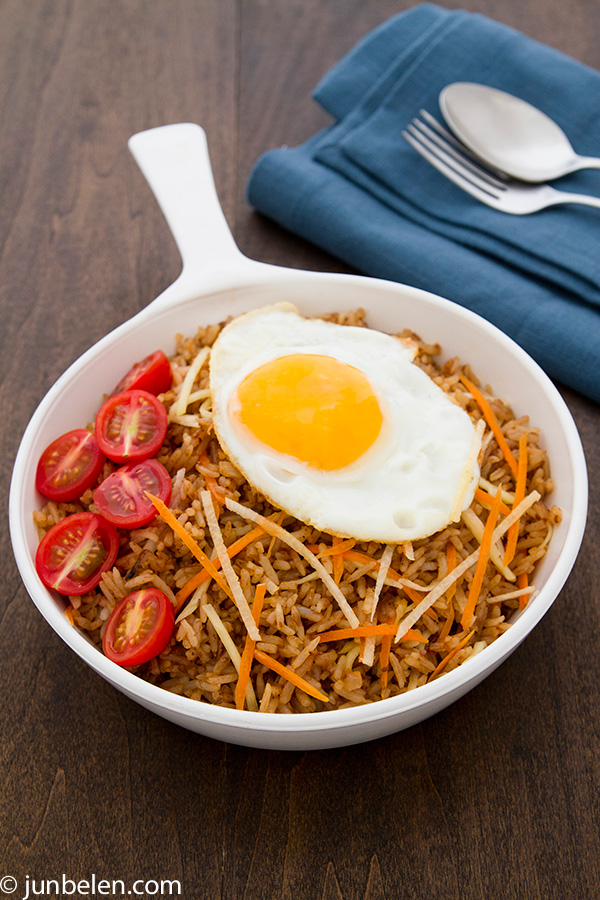“It’s just the two of us,” I told him. Next to me, Stanford stood stumped. Puzzled at what I meant. He tilted his head charmingly and gave me the look — the “I-don’t-know-what-you’re-talking-about-but-that-carrot-you’re-holding-looks-pretty-darn-tasty” look. The chap loves his carrots. Stanford’s a smart snacker that way. I wish I could say the same about myself. I hurled the carrot toward him, which he caught deftly with his mouth. It was gone in a snap.
The house always feels empty when Dennis is away. The kitchen at dinnertime feels particularly hollow. No one noses around. No one gives me a hand. No one pays me a compliment. No one does my dishes, my pots and pans. Dennis and I have an unwritten rule: when one cooks the other one cleans. I agreed to the arrangement even though it’s skewed to my disadvantage. My partner uses every mixing bowl, every measuring cup, every measuring spoon when he prepares dinner. He literally turns the entire kitchen upside down when he cooks and I am left with tidying everything up. It’s far from an equitable distribution of labor, isn’t it? He compensates for his cooking, anyway, so all is good and fair.
I picked out another carrot from the crisper, peeled it, and cut it into strips as thin as matchsticks. I piled them in a stack on a plate along with sweet jicama and sour green mango cut in the same way. Garlic crushed in my mortar and pestle and a small yellow onion chopped into tiny pieces made my mise en place complete.
I don’t mind cooking in solitude at home. I cannot say I enjoy eating alone. I cannot say the opposite either. Good food and good wine are best enjoyed in the company of family and friends but solitary dinners can be pleasurable. “It is the privilege of loneliness,” Virginia Woolf writes in Mrs. Dalloway. “In privacy one may do as one chooses.” Fried rice with fried eggs is my meal of choice. My one-skillet meal for one. It can be as simple as eggs and day-old rice fried with garlic in a hot skillet or as elaborate as — oh well, eggs and day-old rice fried with garlic in a hot skillet — but dressed with pungent bagoong [bah-goh-ohng]! The kind that’s salty but a little sweet. The kind that makes the entire house reek!
A glass of cheap but tasty red accompanied my bowl of bagoong fried rice on that warm spring night. Sutherland and Pavarotti serenaded me and my dinner companion.
“It’s just you and me,” I told him. Stanford tapped my leg with his cold nose then gave me the look. “Aren’t you going to share?” I thought I heard him say.
Bagoong Fried Rice Recipe, makes four servings
2 tablespoons vegetable oil
4 cloves garlic, crushed
1 small onion, chopped
3 cups leftover cooked rice at room temperature (1 cup uncooked gives roughly 3 cups cooked rice)
1/4 cup bagoong alamang, Kamayan or Barrio Fiesta brand
sea salt to taste
1 small green mango, julienned, about 1/4 cup
1 small jicama, julienned, about 1/4 cup
1 medium carrot, julienned, about 1/4 cup
2 medium tomatoes, coarsely chopped
4 eggs, fried
Heat oil in a wok or large heavy skillet over high heat. Add garlic and stir fry until it starts to brown. Add onions and stir fry until soft and fragrant. Add bagoong — shrimp preserved in brine typically used as sawsawan — and stir fry for a minute. Mash the rice gently with clean hands, breaking apart clumps of rice. Pour rice into the hot wok and stir well, again breaking apart clumps of rice with a spatula. Stir until well combined. Stir fry until grains are separated and dressed in bagoong. Season with salt to taste.
Divide into four bowls. Garnish with mango, jicama, and carrots, and tomatoes. Serve with fried eggs.
For a more substantial fried rice, add strips of sweet pork tocino or longganisa.
